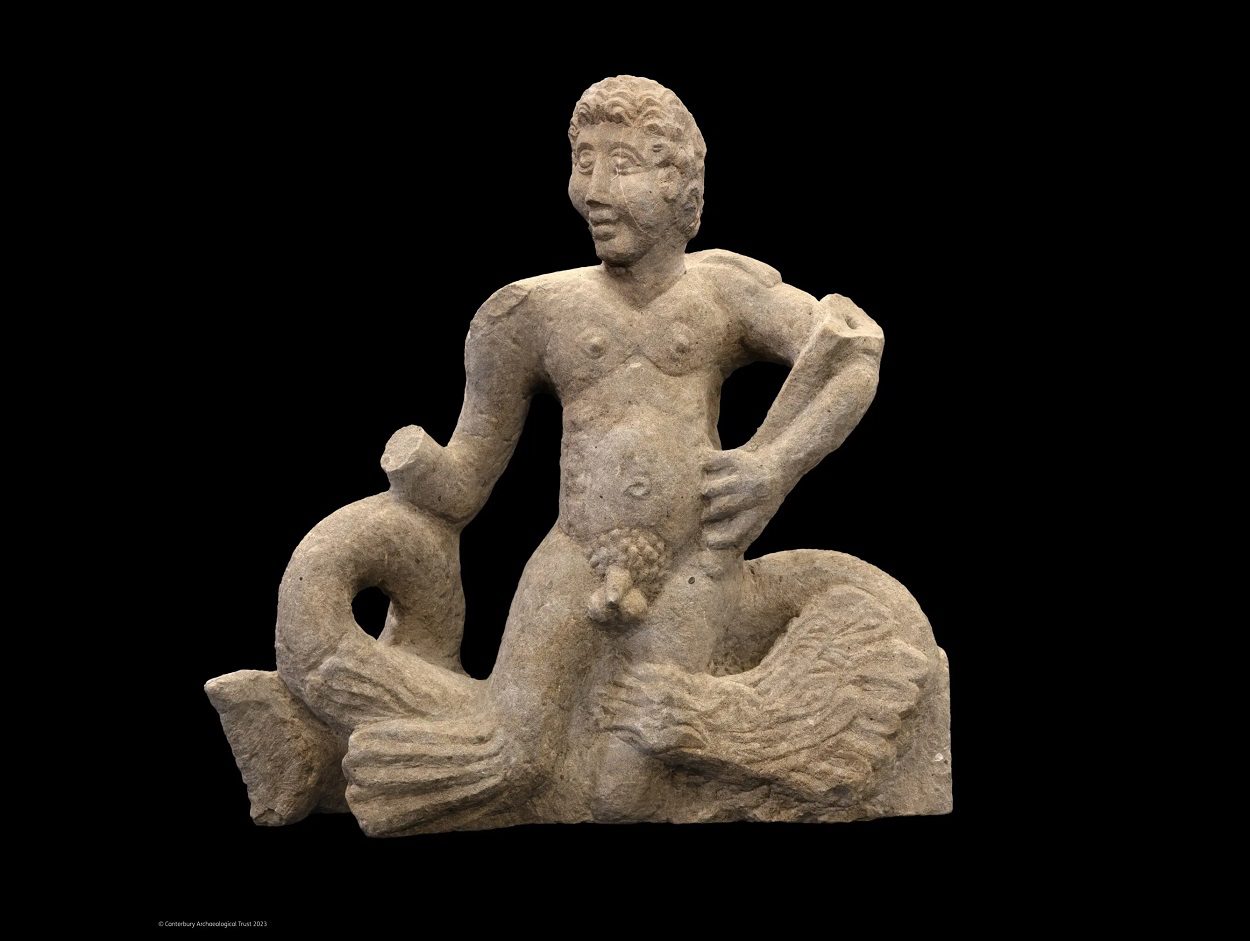Archaeologists from the Canterbury Archaeological Trust (“CAT”) have uncovered a Roman statue of Triton during excavations in preparation for a housing development in Kent, England.
Triton was the god of the sea from the Greek pantheon, and the son of Poseidon and Amphitrite. Greek and Roman depictions of Triton generally represent the god as a merman, with the lower half being that of a fish, while the top half is presented in a human figure.
In a press statement by the Chartway Partnerships Group, archaeologists discovered a mausoleum set in a walled and ditched enclosure adjacent to the A2 London Road (which follows Roman Watling Street) at Teynham in Kent.
Robert Masefield, Director for RPS, said: “We expected interesting Roman archaeology, perhaps a cemetery, but the finds including the lively and unique statue of a Triton and the mausoleum remains have by far exceeded that. These finds are now part of Teynham’s local legacy and the nations rich Roman story. Further study will place the findings in their full historical context.”
Evidence of archaeological remains at the site had been previously investigated by Wessex Archaeology in 2017, however, these prior excavations only uncovered perpendicular fragments of chalk wall foundations and two Roman cremation burials.
In a recent study by CAT, archaeologists have re-excavated the 2017 chalk wall, which upon a closer investigation has been revealed to be part of a 30m square walled enclosure around a c.8m square structure.
According to the researchers, the site could be a mausoleum from during the early to mid-4th century AD (dating evidenced by the discovery of a coin in the demolition fill). Several Roman and possibly later burials were also identified during the excavation within and adjacent to the structures.
The most notable discovery is a statue of Triton, which was found ritually placed within a disused clay-lined water tank on the south-east corner of an outer ditched enclosure.
According to the press statement: “These associations suggest the enclosure complex and central mausoleum was a funerary site of a wealthy local family (possibly associated with a Roman villa found previously at Bax Farm further to the north) and dedicated to Roman maritime deities.”
Header Image Credit : Canterbury Archaeological Trust





